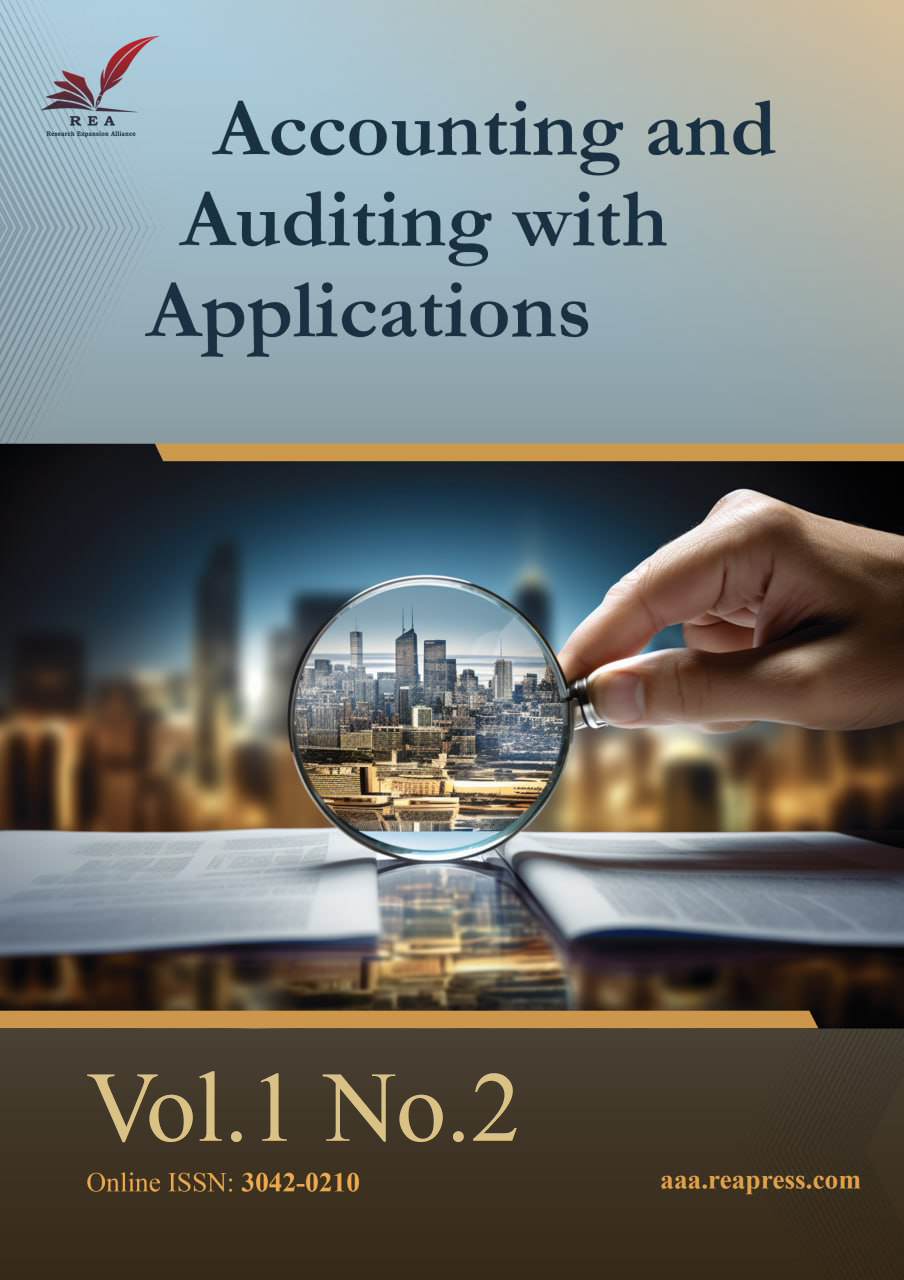Predicting the Financial Distress of Companies Using Piotrowski's F-Score Model
Abstract
Financial distress is a severe issue for the economic life of countries, and its prediction is of great importance for different groups of users, including managers, banks, investors and policymakers. Therefore, this research aims to predict the financial distress of companies listed on the Tehran Stock Exchange using Piotrowski's F-Score model. For this purpose, company information was collected for 113 companies in 9 years from 2014 to 2022. The multivariable regression method based on the logistic analysis was used to test research hypotheses. The study results indicate a negative and significant relationship between the Piotroski F score and the possibility of financial distress. In other words, Piotrowski's F-Score model is well able to predict helpless companies so that companies can prevent their bankruptcy by making correct and logical decisions. Also, the results showed that the increase in operating cash flow and efficiency assets and reduction of accruals could reduce companies' financial distress in the Tehran Stock Exchange.
Keywords:
Financial distress, Forecasting, PiotroskiReferences
- [1] Mehrani, S., Kamyabi, Y., & Ghayour, F. (2020). Effects of accounting and non-accounting indices on financial distress prediction: comparing parametric and non-parametric methods. Empirical research in accounting, 9(4), 49–72. (In Persian). https://doi.org/10.22051/jera.2017.13643.1577
- [2] Brown, L. (2017). Bankruptcydata releases its annual corporate bankruptcy report. https://B2n.ir/gt2478
- [3] Rahman, M., Sa, C. L., & Masud, M. A. K. (2021). Predicting firms’ financial distress: an empirical analysis using the F-score model. Journal of risk and financial management, 14(5). DOI:10.3390/jrfm14050199
- [4] Hernandez Tinoco, M., & Wilson, N. (2013). Financial distress and bankruptcy prediction among listed companies using accounting, market and macroeconomic variables. International review of financial analysis, 30, 394–419. DOI:10.1016/j.irfa.2013.02.013
- [5] Janes, T. D. (2005). Accruals, financial distress, and debt covenants.
- [6] Aggarwal, N., & Gupta, M. (2009). Do high book-to-market stocks offer returns to fundamental analysis in India? Decision.
- [7] Piotroski, J. D. (2000). Value investing: the use of historical financial statement information to separate winners from losers. Journal of accounting research, 38, 1. DOI:10.2307/2672906
- [8] Campbell, J. Y., Hilscher, J. D., & Szilagyi, J. (2011). Predicting financial distress and the performance of distressed stocks. Journal of investment management., 9(2), 14–34.
- [9] Chiang, S. M., Yeh, C. P., & Chiu, C. L. (2009). Permanent and transitory components in the Chinese stock market: The ARJI-trend model. Emerging markets finance and trade, 45(3), 35–55. DOI:10.2753/REE1540-496X450303
- [10] Raei, R, Fallahpoor, S. (2008). Support vector machines application in financial distress prediction of companies using financial ratios. Accounting and auditing review, 15(4), 17–34.
- [11] Deaton, A., & Cartwright, N. (2018). Understanding and misunderstanding randomized controlled trials. Social science and medicine, 210, 2–21. DOI:10.1016/j.socscimed.2017.12.005
- [12] Beaver, W. H. (1966). Financial ratios as predictors of failure. Journal of accounting research, 4, 71. DOI:10.2307/2490171
- [13] Altman, E. I. (1968). Financial ratios, discriminant analysis and the prediction of corporate bankruptcy. The journal of finance, 23(4), 589. DOI:10.2307/2978933
- [14] Matin, R., Hansen, C., Hansen, C., & Mølgaard, P. (2019). Predicting distresses using deep learning of text segments in annual reports. Expert systems with applications, 132, 199–208. DOI:10.1016/j.eswa.2019.04.071
- [15] Acosta-González, E., Fernández-Rodríguez, F., & Ganga, H. (2019). Predicting corporate financial failure using macroeconomic variables and accounting data. Computational economics, 53(1), 227–257. DOI:10.1007/s10614-017-9737-x
- [16] Khodakarimi, P., & Piri, P. (2017). Predicting financial distress with using combined model of accounting and market data with logistic regression approach. Empirical studies in financial accounting, 14(55), 145–168. (In Persian). https://doi.org/10.22054/qjma.2018.11118.1366
- [17] Tahmasebi, R., Anvary Rostamy, A. A., Khorshidi, A., & Sadeghi Sharif, S. J. (2018). Predicting financial distress risk of firms listed in Tehran stock exchange using factor analysis, decision tree and logistic regression models. Journal of investment knowledge, 7(27), 189–206. (In Persian). http://www.jik-ifea.ir/article_12961.html?lang=en
- [18] Barg Beid, A., Jafari, A., & Salehnejad, H. (2021). Providing three-dimensional composite model (financial, economic, sustainability) in predicting companies’ financial distress. Financial accounting and auditing research, 13(51), 105–132.
- [19] Altman, E. I., & Saunders, A. (1997). Credit risk measurement: developments over the last 20 years. Journal of banking and finance, 21(11–12), 1721–1742. DOI:10.1016/S0378-4266(97)00036-8
- [20] Ugur, M., Solomon, E., & Zeynalov, A. (2022). Leverage, competition and financial distress hazard: Implications for capital structure in the presence of agency costs. Economic modelling, 108. DOI:10.1016/j.econmod.2021.105740
- [21] Imeni, M., Rahnamay, R. F., & Banimahd, B. (2019). Relationship real activities manipulation with accrual-based earnings management using recursive equation system approach. Journal of management accounting and auditing knowledge, 8(29), 1–14. (In Persian). https://www.jmaak.ir/article_13822.html?lang=en
- [22] Samadi Lorgani, M., & Imeni, M. (2013). The relationship between working capital management and cash holding companies listed in Tehran stock exchange. Journal of management accounting and auditing knowledge, 2(5), 39–52.(In Persian). https://www.jmaak.ir/article_7434.html?lang=en
- [23] Imeni, M., & Edalatpanah, S. A. (2023). Resilience: business sustainability based on risk management, 199–213. https://doi.org/10.1007/978-981-19-9909-3_9
Downloads
Published
Issue
Section
Categories
License
Copyright (c) 2024 Accounting and Auditing with Applications

This work is licensed under a Creative Commons Attribution 4.0 International License.


